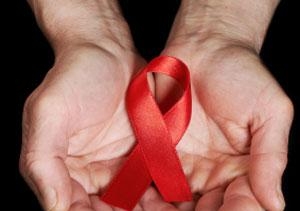World AIDS Day – how far we’ve come
Three decades after the onset of the AIDS pandemic, Australia’s leading HIV research body The Kirby Institute has been involved in every major breakthrough in world-wide HIV treatment and management.
Three decades after the onset of the AIDS pandemic, Australia’s leading HIV research body The Kirby Institute has been involved in every major breakthrough in world-wide HIV treatment and management.

Three decades after the onset of the AIDS pandemic, Australia’s leading HIV research body UNSW's The Kirby Institute has been involved in every major breakthrough in world-wide HIV treatment and management since its inception in 1986.
Saturday 1 December is World AIDS Day and marks thirty years since HIV/AIDS was recognised as one of the greatest health threats of the modern era. The most significant breakthrough in this time has been the development of antiretroviral therapy.
“These antiretroviral treatments are little short of a miracle for the person living with HIV,” says The Kirby’s inaugural Director, UNSW Professor David Cooper. Professor Cooper has personally participated in or led clinical trials that have brought every effective HIV therapy into use around the world.
“But on World AIDS Day, we have to remember that for every three people around the world who start taking antiretroviral therapy, another five become infected. Prevention is the only answer.”
Now running clinical trials in more than 20 countries, the Kirby Institute has a research program ranging from dose optimisation, which establishes the effectiveness of HIV therapies given at a lower dose and lower cost, to the question of when to start therapy; from a study of therapies for patients who have developed resistance to their first line of drugs, to monitoring the effect of HIV medication on children in Asia.
The Kirby Institute’s prevention work takes place both in Australia and regionally. Work throughout the Asia Pacific region – particularly in Thailand, Indonesia and Papua New Guinea – is complemented at home with behavioural studies and intervention among high-risk groups.
The increasing availability of technology allowing rapid testing and results for HIV has the potential to increase the numbers of Australians living with HIV who take up treatment, improving their health and reducing their chances of passing on the infection.
One of The Kirby's latest studies is Opposites Attract, an investigation of serodiscordant gay couples, where one is HIV-positive and the other HIV-negative. The study is designed to establish if HIV transmission is linked to whether the HIV-positive partner is taking antiretroviral therapy. The findings hold enormous promise for transmission prevention strategies.
The study is now recruiting gay couples in Sydney, Melbourne and Adelaide. Recruitment will soon start in Brisbane, and in Cairns and Canberra in 2013.
Media contacts:
Re clinical trials: Professor Sean Emery, 0414 949 363Re regional prevention work: Professor John Kaldor, 0414 29 55 46Re Australian prevention work and Opposites Attract study: Professor Andrew Grulich, 0414 385 317